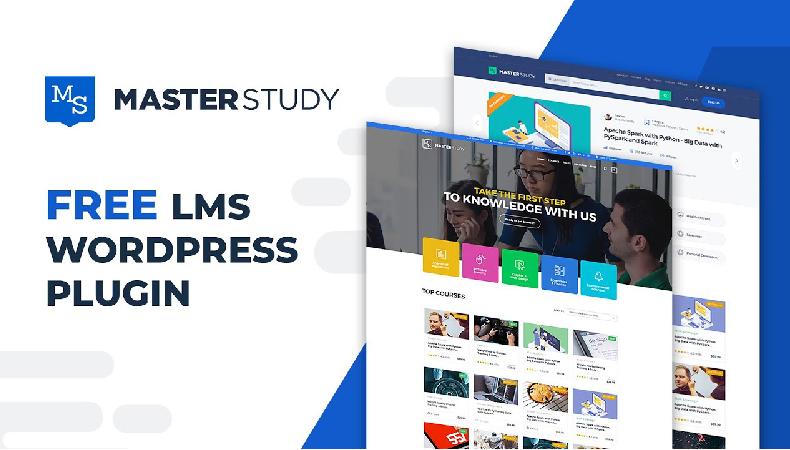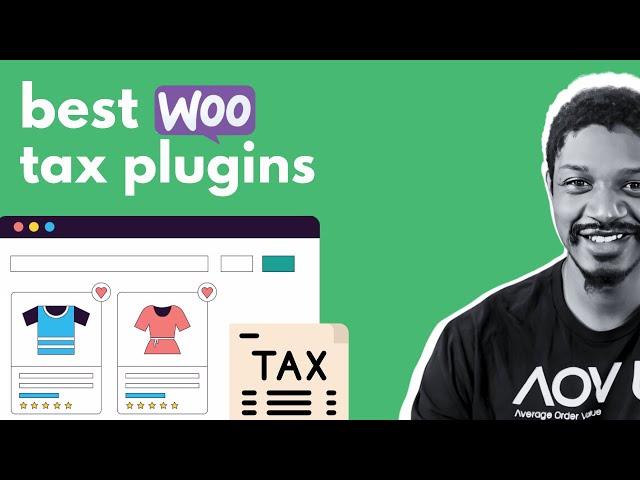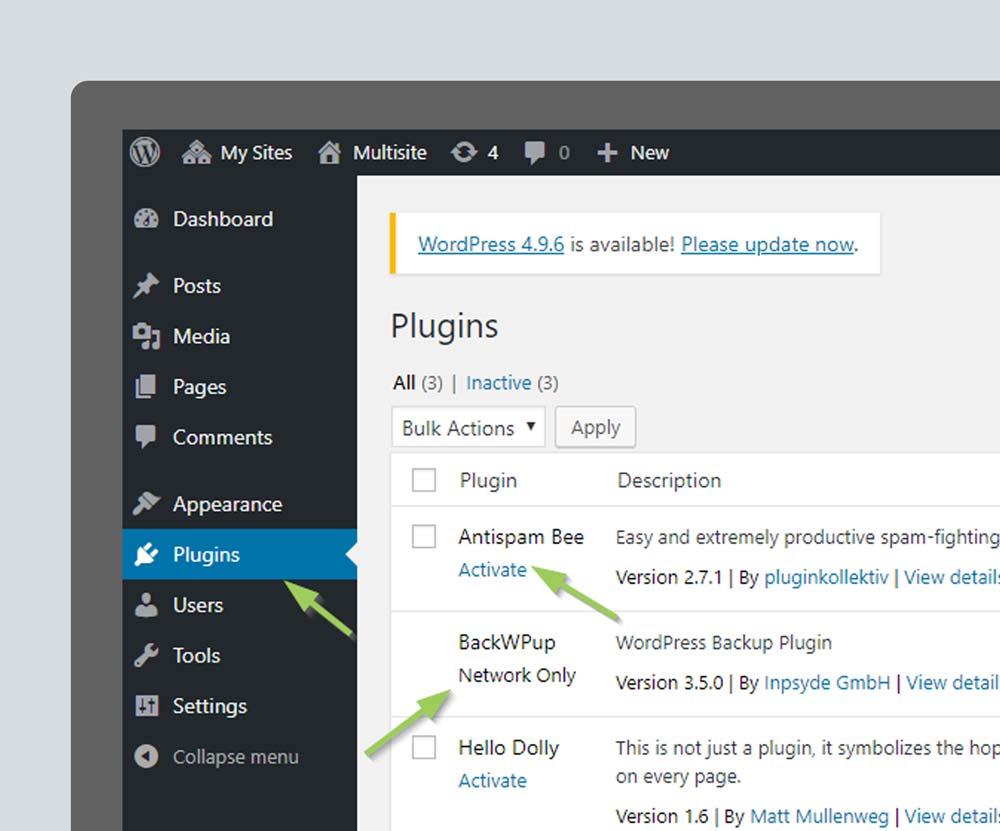Are you ready to turn your passion for teaching into a thriving online business? If you’ve ever dreamed of sharing your knowledge with the world, creating a Learning Management System (LMS) website with WordPress is the perfect way to start! Whether you’re a seasoned educator, a corporate trainer, or just someone with expertise to share, an LMS can help you reach eager learners everywhere.
But where do you begin? The thought of building a website might feel overwhelming, especially if you’re not tech-savvy. Don’t worry! In this article, we’ll walk you through the entire process of creating your own WordPress LMS website—from the initial setup to launching your first course. We’ll break it down into easy-to-follow steps, provide you with valuable tips, and share the best tools to make your journey smooth and enjoyable. By the end,you’ll not only have a stunning,functional LMS website,but you’ll also be ready to inspire and educate students around the globe. So, let’s dive in and get started on your exciting journey towards building a successful online learning platform!
Understanding the Benefits of a WordPress LMS for Your Online Courses
Adopting a WordPress Learning Management System (LMS) offers numerous advantages that can considerably enhance the experience for both educators and learners. One of the standout benefits is the user-friendly interface that WordPress provides, allowing instructors to create and manage courses without needing extensive technical skills. This accessibility enables educators to focus more on course content rather than the complexities of website management.
Another major advantage is the flexibility that comes with a WordPress LMS. Instructors can easily customize their courses to suit different learning styles and preferences. By incorporating multimedia elements such as videos, quizzes, and interactive content, course creators can foster an engaging learning environment. This adaptability ensures that the learning experience is tailored to meet the needs of diverse student populations.
Moreover, a WordPress LMS facilitates scalability. Whether you’re offering one course or multiple programs, you can effortlessly expand your offerings as your audience grows. this means you can start small and gradually build your course catalog, making it a perfect solution for aspiring educators or institutions looking to elevate their online presence.
Moreover, integrating a WordPress LMS allows for robust analytics and reporting tools.Instructors can track student progress, identify which areas of their courses are most effective, and gather feedback for continuous betterment. This data-driven approach enables educators to refine their content and teaching strategies, ultimately leading to better student outcomes.
Lastly,with the vast array of plugins and themes available in the WordPress ecosystem,you can enhance your LMS site with additional features such as membership systems,payment gateways,and community forums.This level of customization not only elevates the user experience but also helps in building a thriving learning community around your courses.
| Benefit | Description |
|---|---|
| User-Friendly Interface | Easy course creation and management without technical skills. |
| Flexibility | Customizable courses to suit different learning styles. |
| Scalability | Ability to expand course offerings as audience grows. |
| Analytics | Track progress and gather feedback for improvement. |
| Customization | Integrate plugins and themes for enhanced features. |
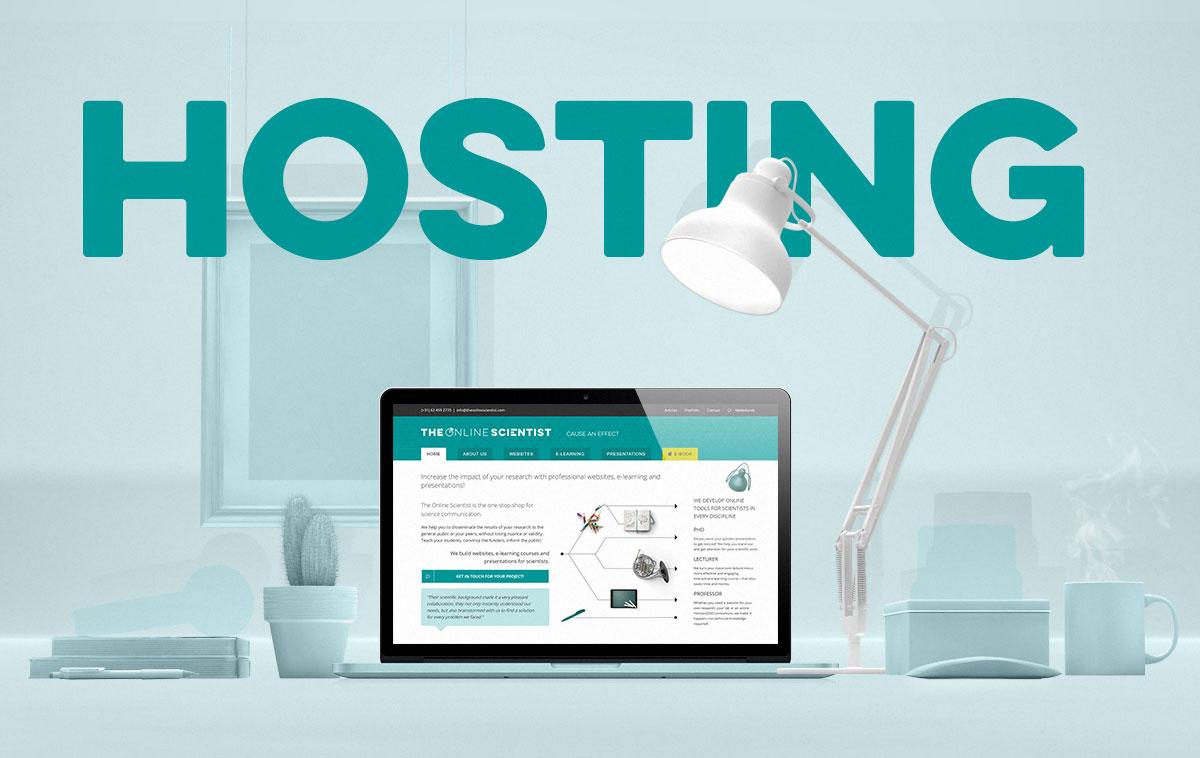
Choosing the Right Hosting Provider for Your WordPress LMS
When it comes to building a successful WordPress Learning Management System (LMS), choosing the right hosting provider can make all the difference. The right host will ensure that your site runs smoothly, delivers content efficiently, and can scale to meet your growing needs as an educator. Here are some key factors to consider when selecting a hosting provider for your WordPress LMS:
- Performance and Speed: A fast-loading website is crucial for user experience. Look for hosting providers that offer optimized servers specifically for WordPress. This can include features like caching, CDN integration, and SSD storage.
- Security Features: Online courses often involve sensitive user data. Ensure your hosting provider offers robust security features, such as SSL certificates, malware scanning, and automatic backups.
- Scalability: As your LMS grows, your hosting needs will evolve. Choose a provider that offers scalable options, such as easy upgrades to higher-tier plans, to accommodate increased traffic and additional features.
- Technical Support: Reliable customer support is essential, especially if you encounter issues. Look for hosting services that offer 24/7 support through various channels like chat, email, or phone.
- Specialized WordPress Hosting: Manny providers offer plans tailored for WordPress sites. These plans often come with one-click installations, automatic updates, and optimized environments for better performance.
In addition to these features, consider the pricing structure of different hosting providers. Here’s a quick comparison of some popular options that cater specifically to WordPress LMS needs:
| Hosting Provider | Starting Price | Key Features |
|---|---|---|
| SiteGround | $3.99/month | daily backups, Free SSL, 24/7 support |
| Bluehost | $2.95/month | One-click installs, Free domain for the first year |
| WP Engine | $20/month | Managed hosting, Premium support, Super fast |
| Kinsta | $30/month | Google Cloud-backed, Staging environments, Advanced security |
the right hosting provider will not only impact the performance and user experience of your WordPress LMS but can also enhance your ability to manage and grow your online courses effectively. Take your time to research and evaluate your options, keeping your specific needs in mind to ensure you make the best choice for your educational platform.
Selecting the Best LMS Plugins to Enhance Your Learning Experience
Choosing the right Learning Management System (LMS) plugins is crucial for maximizing the potential of your WordPress site. With a plethora of options available, it can be overwhelming to determine which plugins will best cater to your learning objectives and enhance user engagement. Here are a few key factors to consider when making your selection:
- Compatibility: Ensure that the plugin is compatible with your existing WordPress theme and other plugins. This will prevent conflicts and ensure smooth functionality.
- Features: Look for essential features such as quizzes, certificates, grading systems, and interactive content.A robust set of features can enhance the learning experience for your users.
- User Reviews: Investigate user feedback and ratings. Reviews can provide valuable insights into the plugin’s performance, support, and overall satisfaction from a learner’s outlook.
- Support and Documentation: A plugin with extensive documentation and responsive support can save you time and trouble in the long run when you encounter any issues.
To help narrow down your options, consider the following popular LMS plugins:
| Plugin Name | Key Features | User Rating |
|---|---|---|
| LearnDash | Advanced quizzing, course builder, certificates | 4.8/5 |
| LifterLMS | Membership options, gamification, drag-and-drop | 4.7/5 |
| WP Courseware | Course creation, email notifications, student tracking | 4.6/5 |
In addition to these plugins, consider enhancing your LMS with supplementary tools that can improve functionality. Such as, integrating a forum or community plugin can foster collaboration among learners, while an analytics plugin can provide you with insights into student performance and engagement. This holistic approach will not only create a more dynamic learning environment but also help you tailor content to meet your audience’s needs.
Ultimately, the best LMS plugin for your site will depend on your specific goals and the needs of your learners. By taking the time to evaluate your options carefully and considering the factors outlined above, you can select plugins that will not only enhance your WordPress LMS website but also elevate the overall learning experience.
Designing a User-Friendly Course Layout That Engages Students
Creating a course layout that resonates with students is essential for maximizing engagement and enhancing the learning experience. A well-structured course should guide learners through the material seamlessly, making navigation intuitive and content accessible. Start by considering how the course is organized; a clear, logical structure helps students understand what to expect and how to progress.
Visual hierarchy plays a crucial role in course design. Use headings and subheadings effectively to break up content into digestible sections. This not only improves readability but also allows students to scan for information quickly. Incorporate elements like bullet points and numbered lists to highlight notable concepts and steps.
Another key aspect is the use of multimedia. Integrating videos, infographics, and interactive quizzes can significantly enhance engagement.here are some tips for incorporating multimedia effectively:
- Use videos to explain complex topics.
- Embed quizzes in the course flow to reinforce learning.
- Utilize infographics to summarize information visually.
Moreover,consider implementing a responsive design that adjusts to various devices. Your students may access the course from laptops, tablets, or smartphones, so ensure that all elements of the layout function smoothly across different screens. A responsive design not only improves usability but also demonstrates your commitment to providing a quality learning experience.
encourage feedback on the course layout. Create a simple table for students to share their thoughts:
| Feature | Rating (1-5) | Comments |
|---|---|---|
| Navigation Ease | 4 | Intuitive but could use clearer labels. |
| Content Clarity | 5 | Well-organized and easy to follow! |
| Multimedia Engagement | 3 | More videos would be helpful. |
Incorporating student feedback allows you to continuously refine the course layout, ensuring it meets their needs. By focusing on these crucial aspects,your course will not only be user-friendly but also a valuable resource that keeps students engaged and eager to learn.

Essential Features Every WordPress LMS should Include
Building a successful Learning Management System (LMS) on WordPress involves integrating essential features that enhance user experience and streamline course management. Whether you’re an educator, a corporate trainer, or a business looking to share knowledge, these features will set the foundation for a robust online learning platform.
user-Friendly Interface: The design of your LMS should prioritize ease of navigation. A clean, intuitive interface will help users find their courses, track progress, and access resources without confusion.Consider incorporating:
- Responsive design for mobile and tablet compatibility
- Course dashboards that summarize progress and upcoming tasks
- Simple registration and login processes
Course management tools: Effective course management is crucial for both instructors and students.the ability to create, manage, and deliver courses seamlessly can significantly impact the learning experience. Key tools to include are:
- Drag-and-drop course builders for ease of content creation
- Options for multimedia content such as videos,quizzes,and assignments
- Flexible scheduling for courses and live sessions
Assessment and Certification: To gauge student learning and provide recognition for achievements,integrating assessment tools is vital. Features to consider include:
- Quizzes and exams with automated grading
- Certificates of completion that can be customized and emailed to students
- Progress tracking to help instructors monitor student performance
Community Engagement: Fostering a sense of community among learners can greatly enhance the educational experience.Consider integrating:
- Discussion forums for peer-to-peer interaction
- Live chat options for immediate support and feedback
- Group projects or collaborative assignments to encourage teamwork
Analytics and Reporting: understanding how well your courses are performing is essential for continuous improvement.Including robust analytics tools allows you to:
- Track user engagement and course completion rates
- gather feedback through surveys and polls
- Analyze sales and revenue metrics for your LMS
By incorporating these essential features, your WordPress LMS can provide an enriching and effective learning experience that keeps students engaged and motivated. Remember, the right tools can make all the difference in transforming your educational vision into reality.
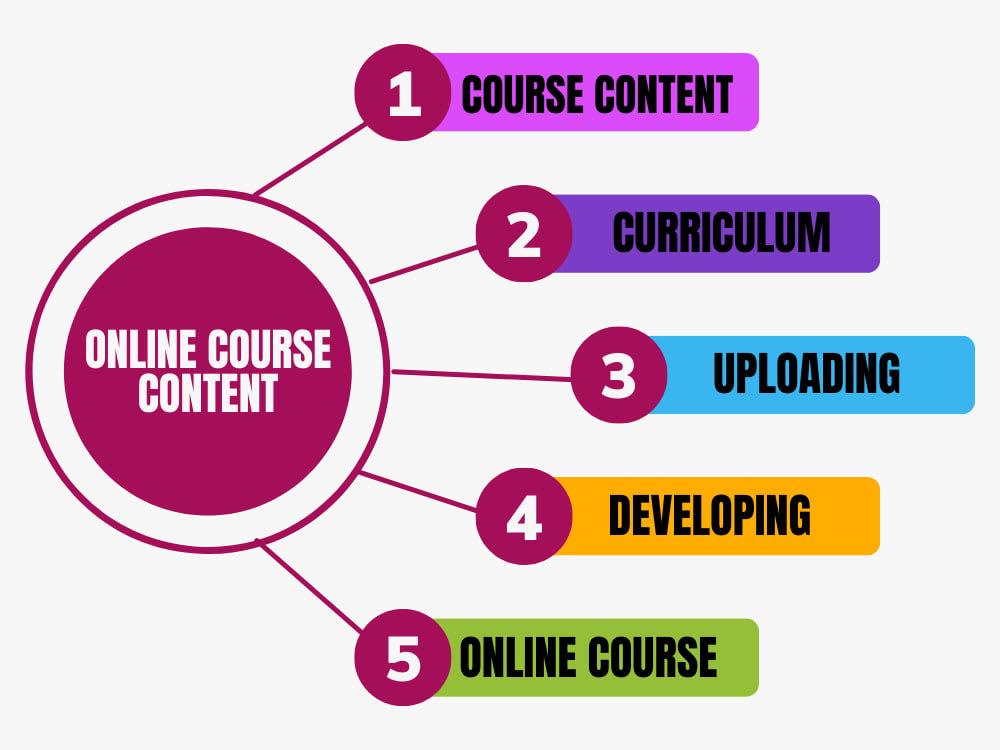
Creating Compelling Course Content That Attracts Learners
Creating engaging and effective course content is essential for attracting and retaining learners. To ensure your courses stand out in a crowded market, focus on delivering value, interactivity, and a clear learning pathway. Here are some practical strategies:
- Know Your Audience: Conduct surveys or polls to understand their needs, preferences, and pain points. Tailoring your content to address these aspects will make your courses more relevant and appealing.
- Use a Variety of Formats: Incorporate videos, podcasts, infographics, and quizzes to cater to different learning styles. A mix of formats keeps the content dynamic and engaging,preventing learners from losing interest.
- Set Clear Learning Objectives: Each module should have specific, measurable goals.When learners know what they will achieve, it enhances their motivation and keeps them focused.
Additionally, consider the importance of storytelling in your course content. Weave real-life examples and case studies into your lessons to make the material relatable. This not only enhances understanding but also helps learners see the practical submission of their knowledge.
| Course Element | Description |
|---|---|
| Interactive Quizzes | Gauge understanding and reinforce learning through engaging assessments. |
| Discussion Forums | Encourage collaboration and community building among learners. |
| Live Q&A Sessions | Provide real-time support and address learner queries directly. |
don’t underestimate the power of feedback. Implement a system for learners to share their thoughts on the course materials. Use this feedback to continually refine and enhance your content, making it even more compelling over time. By prioritizing learner engagement and satisfaction, you’ll create a loyal community eager to enroll in future courses.
Implementing Effective Assessment Methods to Measure Progress
when creating a WordPress LMS website, assessing student progress is essential for ensuring that your learners are achieving their goals and that your courses are effective. To do this successfully, you must implement assessment methods that are not only reliable but also engaging and conducive to learning. Here are some effective strategies to consider:
- Quizzes and Tests: Incorporate quizzes at the end of each module to reinforce concepts. WordPress plugins like Quiz Maker or WP quiz can definitely help you create interactive, graded assessments that provide immediate feedback.
- Assignments: Encourage students to submit assignments that reflect their comprehension of the material. Use platforms like Elementor or WPForms to create submission forms that are easy to navigate.
- Peer Reviews: Foster a collaborative learning environment by allowing students to review each other’s work. This not only helps them learn from one another but also enhances critical thinking skills.
- Discussion Forums: engage students through forums where they can discuss course material. This can be facilitated through plugins like bbPress or BuddyPress, encouraging dialog and deeper understanding.
Utilizing varied assessment types helps cater to different learning styles and keeps students motivated. For example, while some may excel in conventional quizzes, others might thrive in project-based assignments. by providing a mix, you can create an inclusive learning atmosphere that supports all students.
| Assessment Type | benefits |
|---|---|
| Quizzes | Quick feedback, easy to analyze |
| Assignments | In-depth understanding, practical application |
| Peer Reviews | Encourages collaboration, diverse perspectives |
| Discussion Forums | Enhances communication skills, fosters community |
don’t forget to gather feedback on your assessment methods. Use surveys to understand what works well and what needs improvement. This ongoing evaluation will enable you to refine your approach, ensuring that your LMS not only measures progress effectively but also enhances the overall learning experience.

Promoting Your WordPress LMS Website for maximum Reach
Once your WordPress LMS website is up and running, it’s time to turn your attention to promoting it effectively. The digital world is crowded, and standing out requires strategic planning and creativity. Here are several actionable strategies to help you maximize your site’s reach.
- Leverage Social media: Utilize platforms like Facebook, Twitter, LinkedIn, and instagram to share your course content. Creating engaging posts, stories, and even live sessions can draw attention to your offerings.
- Content Marketing: Start a blog on your LMS site. Share insights, tips, and valuable resources related to your courses. This not only positions you as an authority but also improves your SEO.
- Email Marketing: Build an email list by offering free resources or discounts. Regular newsletters can keep your audience informed about new courses and promotions, encouraging repeat visits.
- SEO Optimization: Use targeted keywords in your course descriptions, blog posts, and website meta tags. This will help search engines rank your site higher, making it easier for potential learners to find you.
Collaborating with influencers or other educational platforms can also significantly boost your visibility. Consider creating affiliate programs or partnerships to expand your reach. For example, offering a commission for every signup generated through an influencer’s referral can be an effective incentive.
Don’t underestimate the power of community engagement. Participate in forums,Facebook groups,or online communities related to your niche.Share your knowledge and engage with potential learners without being overly promotional. This organic approach builds trust and can lead to higher conversion rates.
| Promotion Method | Benefits |
|---|---|
| Social Media | Wide reach, instant engagement |
| content Marketing | Establishes authority, drives organic traffic |
| Email Marketing | Direct communication, nurture leads |
| SEO Optimization | Increases visibility, attracts targeted audience |
track your efforts using analytics tools. Understanding what works and what doesn’t will allow you to adapt your strategies accordingly, ensuring that your promotional efforts yield the maximum possible reach for your WordPress LMS site.
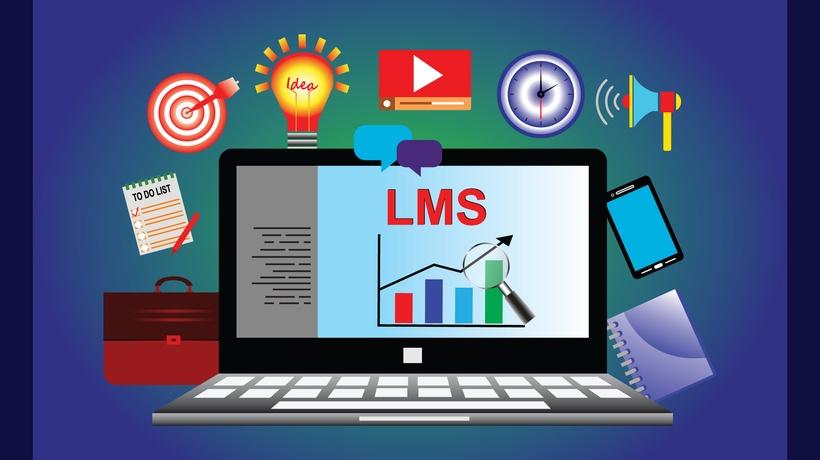
Maintaining and Updating Your LMS for Long-Term Success
Key Strategies for Keeping Your LMS Relevant
To ensure your Learning Management System (LMS) remains effective and engaging over time, regular maintenance and updates are essential. Here are some vital strategies to consider:
- Regular Content Updates: Refresh course material to incorporate the latest trends and information. This not only keeps the content relevant but also enhances the learning experience for users.
- User Feedback Collection: Implement mechanisms for gathering feedback from your learners. Surveys and suggestion boxes can provide insights into what works and what needs improvement.
- Plugin and Theme Management: Keep your WordPress plugins and themes up-to-date to ensure compatibility and security.Regular updates help prevent vulnerabilities and improve functionality.
- Performance Monitoring: Utilize analytics tools to track user engagement and course completion rates. Monitoring these metrics can help you identify areas for enhancement.
Conducting Regular System Audits
Periodically auditing your LMS can uncover hidden issues and opportunities for improvement. Consider the following aspects during your audit:
| Audit Area | Focus Points |
|---|---|
| Content quality | Relevance, accuracy, and engagement level |
| User Experience | navigation, accessibility, and design |
| Technical Performance | Loading speed, uptime, and responsiveness |
By focusing on these areas, you can ensure your LMS not only meets current standards but also evolves to meet the changing needs of learners.
Engaging Your Community
Creating a vibrant community around your LMS can greatly enhance user engagement. Here are some ways to cultivate that community:
- Discussion Forums: Encourage interaction between learners by setting up discussion boards where they can share ideas and ask questions.
- Webinars and Q&A Sessions: Host live sessions to provide additional support and foster a sense of community among your learners.
- Social Media Integration: Leverage social media platforms to keep learners informed and engaged with updates and community events.
By focusing on these strategies, you’ll not only maintain your LMS but also cultivate a thriving educational environment that supports lifelong learning.

Building a community Around Your learning Platform for Better Engagement
Creating a thriving community around your learning platform can significantly enhance user engagement and retention. When learners feel connected and supported, they are more likely to complete courses and participate actively. Here are some strategies to foster that sense of community:
- Interactive Forums: Set up discussion forums where users can ask questions, share insights, and offer support. This not only builds camaraderie but also encourages peer-to-peer learning.
- Regular Webinars: Host periodic live sessions to discuss course material,invite guest speakers,or tackle common challenges. These events can create excitement and provide a face to your platform.
- Social Media Integration: Leverage social media platforms to connect with your audience.Create dedicated groups where learners can interact, share successes, or discuss learning strategies.
- Gamification: Incorporate elements such as badges, leaderboards, and rewards to motivate users. Recognizing achievements can boost morale and create a friendly competitive atmosphere.
Another effective way to enhance community engagement is through user-generated content. Encourage learners to share their own experiences and insights on your platform, whether through blogs, video testimonials, or case studies. This not only enriches the content available on your site but also empowers users by giving them a voice in the community.
To implement these ideas effectively, consider the following table to help you prioritize your community building efforts:
| Strategy | Benefits | Implementation Time |
|---|---|---|
| Interactive Forums | Fosters collaboration and peer support | 1-2 weeks |
| regular Webinars | Direct interaction and real-time feedback | 2-4 weeks |
| Social Media Integration | Wider reach and community engagement | Ongoing |
| Gamification | Increased motivation and participation | 3-6 weeks |
Ultimately, building a community around your learning platform requires ongoing commitment and creativity. By implementing these strategies, you can create an engaging and supportive environment that not only enhances the learning experience but also cultivates loyalty among your users.
Frequently Asked Questions (FAQ)
Q&A for “How to Create a WordPress LMS Website – From Start to Finish”
Q: What exactly is a Learning Management System (LMS), and why should I consider creating one with WordPress?
A: Great question! A Learning Management System (LMS) is an online platform that allows you to create, manage, and deliver educational content. With WordPress,you can easily build a customizable LMS without needing extensive coding skills. It’s an excellent choice as WordPress is user-friendly, highly flexible, and supported by a vast community of developers and resources.Plus, with a WordPress LMS, you can reach a global audience and create an income stream through course sales!
Q: Sounds intriguing! Where do I start if I want to create my own LMS website?
A: The first step is to choose a domain name and a hosting provider. Your domain name should reflect your brand or the courses you’re offering. After that, sign up for a reliable hosting service that supports WordPress. Once you’ve got that set up, you can install WordPress with just a few clicks!
Q: What themes and plugins are essential for creating a successful LMS?
A: You’ll want to choose a WordPress theme that is specifically designed for education and LMS purposes. Themes like Astra, Eduma, or LearnDash are fantastic options. As for plugins, consider using LearnDash or LifterLMS as your course management system. These plugins help you create courses, quizzes, and even forums for student interaction. Don’t forget to install other essential plugins for SEO, security, and performance optimization!
Q: How can I make my courses engaging and interactive?
A: Engaging content is key! Use a mix of videos, quizzes, infographics, and downloadable resources. Incorporate interactive elements like discussion forums and live Q&A sessions to foster a community feel. Gamification features, such as badges or certificates for course completion, can also motivate learners to stay engaged!
Q: What about marketing my LMS once it’s ready?
A: Marketing is crucial for attracting students. Start by optimizing your website for SEO to ensure it ranks well on search engines. You can also use social media platforms to promote your courses and share valuable content related to your niche.Consider running email campaigns to keep in touch with potential students and offer exclusive discounts or free trials to entice sign-ups.
Q: Is ther ongoing maintenance involved in running an LMS website?
A: Absolutely! Like any website, your LMS will require regular updates and maintenance.This includes updating WordPress, themes, and plugins to keep everything running smoothly and securely. You’ll also want to regularly assess your courses and gather feedback from students to improve their learning experience continuously.
Q: I’m excited to start but feeling a bit overwhelmed. Can I really do this?
A: You absolutely can! Creating a WordPress LMS might seem daunting at first, but with step-by-step guidance, it becomes much more manageable. Plus, the resources, tutorials, and community support available online are incredibly helpful. Take it one step at a time,and before you know it,you’ll have your very own LMS up and running!
Q: Any final tips for success?
A: Definitely! Stay focused on your audience’s needs. Listen to their feedback and continually improve your courses. Consistency is key – whether it’s posting new content, engaging with your community, or marketing. Remember,you’re not just building a website; you’re creating a learning environment that can make a real difference in peopel’s lives!
With this Q&A,you’ll be ready to dive into creating your wordpress LMS website and transform your passion for teaching into a thriving online venture. Happy building!
To Conclude
And there you have it! You’re now equipped with all the tools and knowledge you need to create your very own WordPress LMS website, from start to finish. It might seem a bit overwhelming at first, but remember, every expert was once a beginner. By following the steps outlined in this article, you’re not just building a website; you’re creating a vibrant learning community that can empower students and educators alike.
So, what are you waiting for? Dive in and start crafting a platform that reflects your passion for teaching and learning.Whether you’re looking to share your expertise or provide a space for others to grow, a WordPress LMS can be your canvas. Plus, with the flexibility and customization options available, you can make it truly yours.
If you have any questions or need further guidance, don’t hesitate to reach out. The WordPress community is here to support you on this journey. And remember, every click and customization is a step towards realizing your vision. Happy building,and we can’t wait to see what you create!

